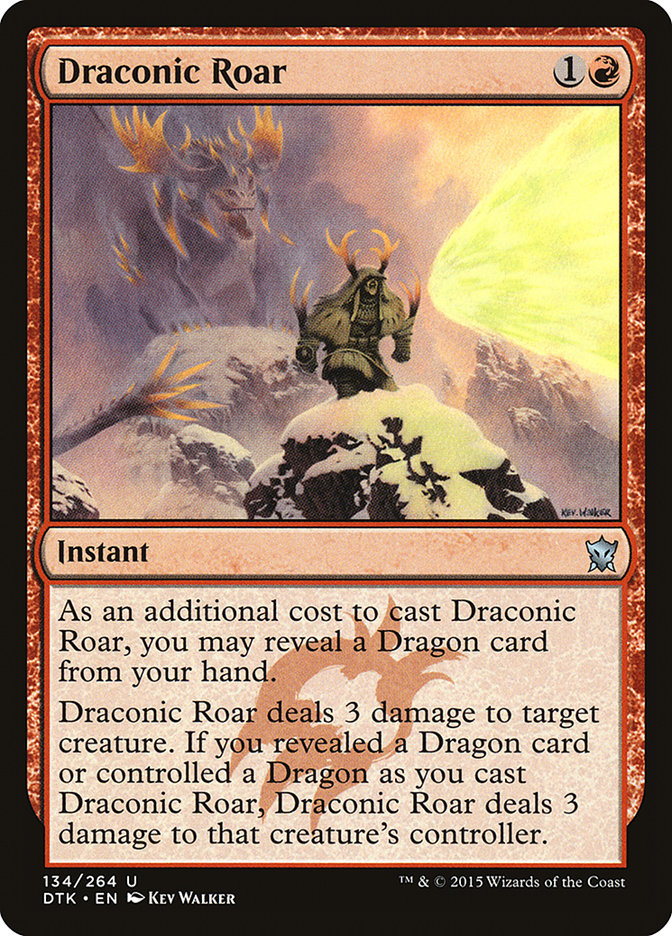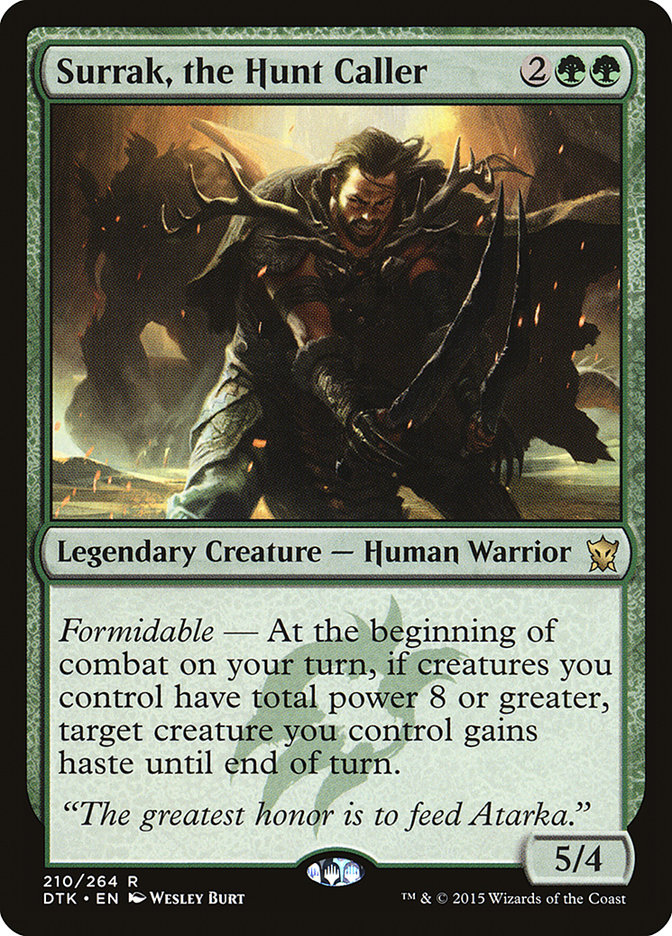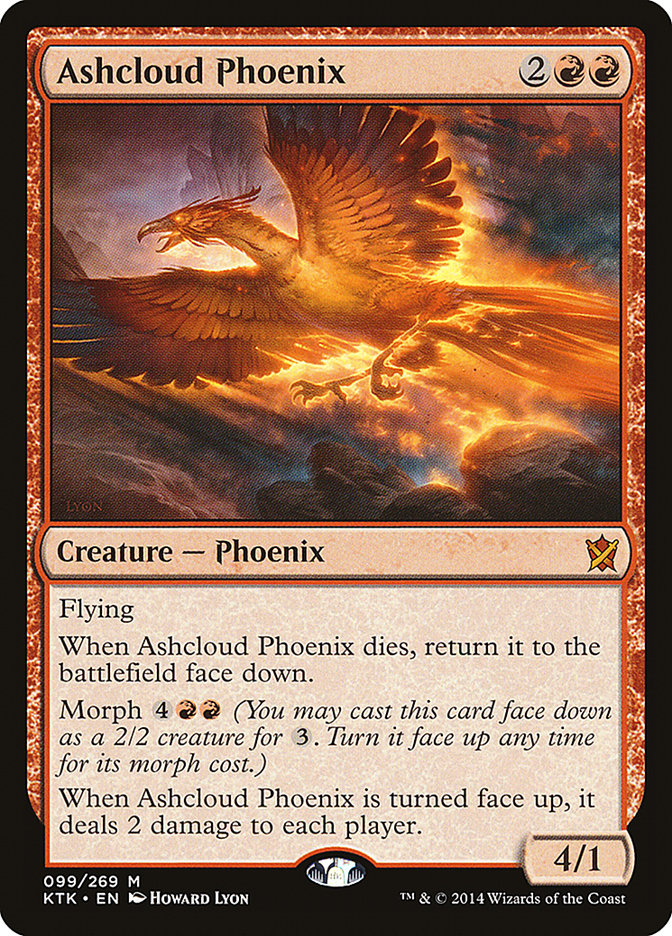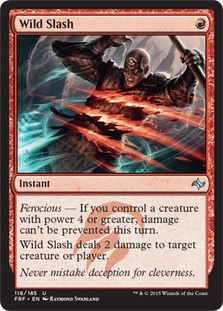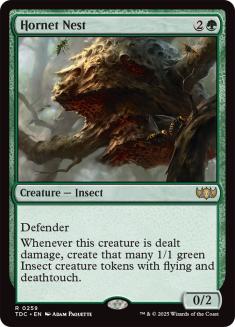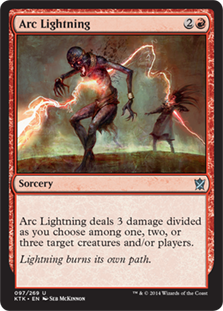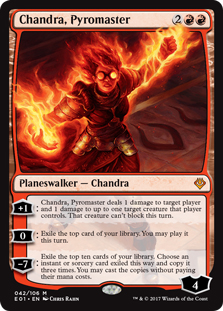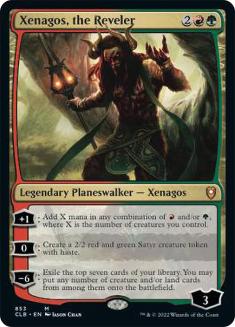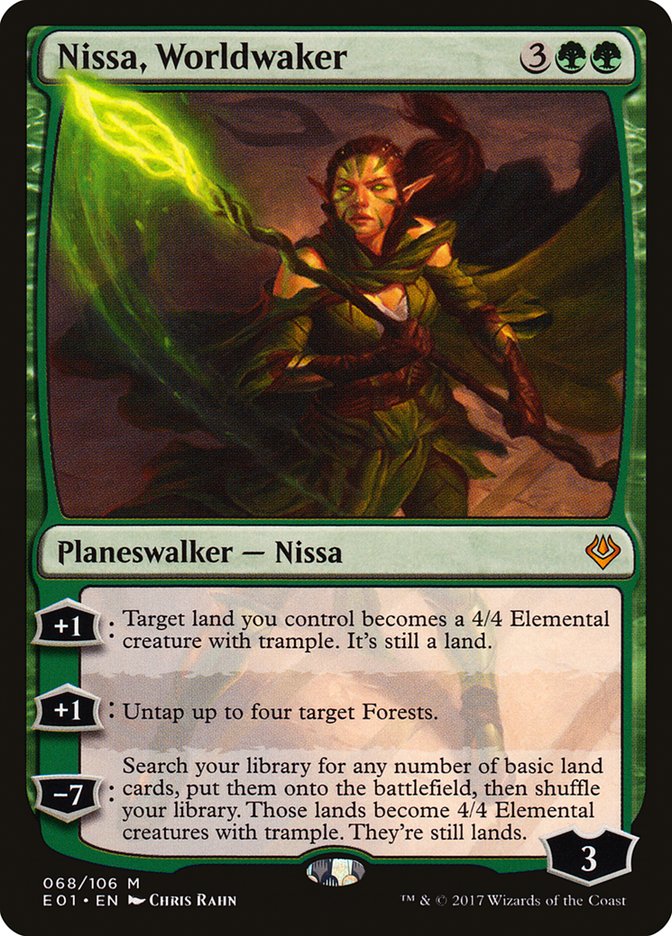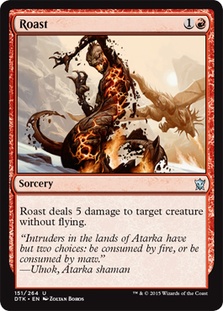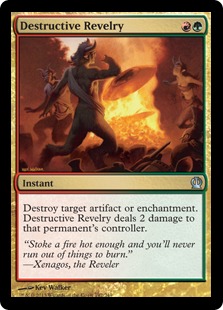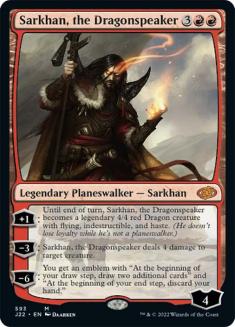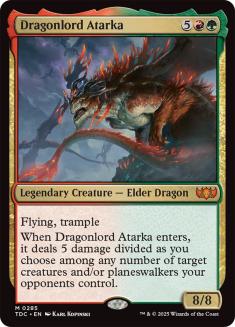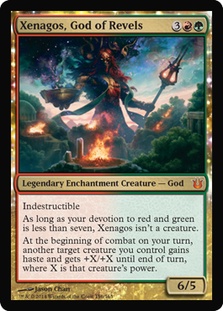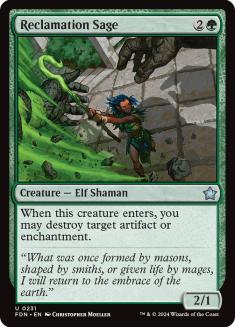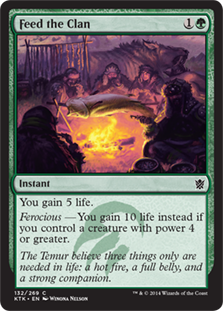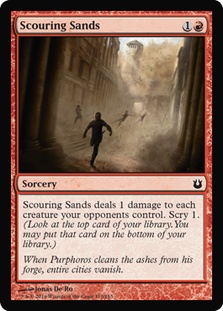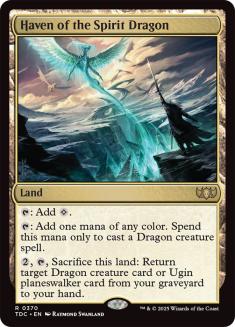The Season One Invitational has come and gone, and Dragons of Tarkir Standard is officially upon us. While some of the decks that did well may be a tad bit
surprising, the Reid Duke versus Jacob Wilson finals definitely was not. If people had done brackets of the Invitational, there would have been quite a few
winners.
My story for the Invitational is a bit different. Leading into the final days before the Invitational I was locked into the Jeskai Tokens deck that Brad
had been championing. I felt in my heart of hearts that G/R Aggro was the deck to be on, but I just couldn’t figure out the proper build. I was still stuck
on Flamewake Phoenix and hadn’t fully embraced just how amazing Thunderbreak Reagent was.
Now this isn’t to say that the Jeskai Tokens deck we were on was bad or that Infect in Legacy was bad. In fact, BBD placed ninth, and Todd made it all the
way to the Top 8. Dragonlord Ojutai out of the sideboard was absolutely insane and is basically unbeatable once you get it into play. I just knew in my
heart that I should be Stormbreath Dragon-ing people, but I just didn’t put in the work to figure it all out.
In fact, I think that the Jeskai Tokens deck was great for the first event with Dragons of Tarkir, and had variance been on my side just a little bit more,
things would have been much different. In the first two rounds I cast Treasure Cruise in each of the four games that were played and literally every single
one drew three lands. I flooded and lost games that were extremely close and lost by margins of a single spell.
The addition of Anticipate was actually great. It helped the deck flow a bit better than before. It smoothed out our draws and gave us something to dig for
Jeskai Ascendancy, or whatever particular burn spell we needed to close the game out. It also played a key role in our sideboard plan by giving us
something to do on the turns where we leave up mana for our counterspells, but our opponents either didn’t have anything or decided to not play into them.
Games tend to slow down a bit, especially after sideboard, and our Dragonlord Ojutai plan was great. Everyone was still so afraid of getting combo-killed
out of nowhere, and we would just slam this five-mana Dragon that was almost impossible to kill, especially with an Ascendancy in play, and continually
drew us the best card in the top three of our deck.
I’m sure Brad, Todd and/or BBD will go over the deck a bit more in depth, but my mind has been locked on G/R ever since the weekend and the card that I
missed:
At the end of the previous Standard format, decks were getting leaner and trying to go under each other in order to gain some leverage in the early and
midgame, which caused a huge uptick in the card Wild Slash. This card was important as a way to interact early and was an essential way to generate early
two-spell turns to steal the initiative back or catapult yourself further ahead. Goblin Rabblemaster was everywhere, and Soulfire Grand Master was
headlining the Outpost Siege-fueled decks that wanted to make the game go long and draw many extra cards if they couldn’t end the game in a flurry of
creatures and cheap interaction.
With the introduction of broader two-mana interaction spells with Dragons of Tarkir, it’s not so much that the format has slowed back down, it’s just that
there are plenty of ways to interact with our opponents early so we either have to ignore the interaction (Abzan Control, Sultai Control), play threats
that are able to dodge the common early interaction (Mantis Rider), or find ways to get even more out of our interaction.
Enter Draconic Roar. The “Searing Blaze” bonus from the card is what has pushed it over the edge, and I’m a little disappointed that I missed it. In
conjunction with Thunderbreak Regent and Stormbreath Dragon, we have a total of eight ways to turn on the extra mode, which can be game-breaking, and when
we can’t, its killing a Mantis Rider, Goblin Rabblemaster, or Fleecemane Lion at worst.
Why is the three extra damage so important?
By itself it’s not that significant, but much like how Searing Blaze can be so backbreaking in Burn, it’s the same here. When combined with the rest of the
deck it really adds up and puts a tremendous amount of pressure on our opponents. Heir of the Wilds gets in plenty of chip shots. Goblin Rabblemaster is
very good at getting in some amount of damage, but because of the snowball nature of the card, people have to build their decks with it in mind, and it
tends to get answered. Thunderbreak Regent is getting in damage no matter what, be it attacking or getting targeted, and we all know by now just how great
daddy Stormbreath Dragon is. Combine this with Crater’s Claws and Boon Satyr bestows out of nowhere, and the damage quickly adds up. A lot of times, just
three extra damage from a Draconic Roar combined with the attacks being provided by the creature being gone will be enough to steal a game.
Draconic Roar, Thunderbreak Regent, and Stormbreath Dragon are a trio that we’re going to be seeing a lot of until Stormbreath Dragon rotates out.
Hopefully we get a dragon who’s just as nice in Magic Origins or Battle for Zendikar.
Creatures (30)
- 4 Elvish Mystic
- 4 Stormbreath Dragon
- 4 Boon Satyr
- 4 Goblin Rabblemaster
- 4 Rattleclaw Mystic
- 3 Heir of the Wilds
- 4 Thunderbreak Regent
- 3 Surrak, the Hunt Caller
Lands (23)
Spells (7)
Sideboard

While Ross Merriam was the sole G/R player in the Top 8 of the Season One Invitational, there were plenty that did well in the Invitational, and the deck
was all over the Standard Open the following day.
I really like Ross’s deck and plan on using it as a starting point for my SCG Syracuse preparation this week. While I wished that Dragons of Tarkir was on
Magic Online, luckily I have a house full of Magic players to test with.
The big differences from where I was stuck on G/R to where the decks are now were the inclusion of Draconic Roar and Rattleclaw Mystic. I initially
dismissed having the extra mana accelerant, but it’s exactly where we want to be. Thunderbreak Regent and Stormbreath Dragon want to get into play ASAP,
and with Crater’s Claws and Boon Satyr, we always have something to do with our mana.
There are really only a couple points of contention for me with the G/R archetype. The first is the numbers on the removal. I think that Crater’s Claws,
Roast, and Draconic Roar are definitely the spells to be playing in the maindeck, but what are the numbers? I think that 7-8 is the right number, but
getting to the right configuration will be important. Much like in Jund Monsters from the past, we only had a handful of slots for removal, so picking the
right ones for any given week will be key.
In the dark I’m going to start with 3 Draconic Roar, 3 Crater’s Claws, and 2 Roast. Ross’ 2/4/1 split is another possibility, but I really want to reap the
Dragon rewards of Draconic Roar as much as possible. We also can afford 3-6 slots in the sideboard for more burn/removal as we deem necessary.
Another point of contention is a much bigger one. Surrak, the Hunt Caller is admittedly great, but I don’t know if he’s better than Ashcloud Phoenix. When
I played the deck last I only had one Surrak, the Hunt Caller, and I thought it was amazing the few times that I drew it, but I also thought that
Thunderbreak Regent was bad, so it’s very likely I was playing the deck wrong and misevaluating the cards.
Surrak, the Hunt Caller is a very sizable body and can put on a lot of pressure with his triggered ability. It should be fairly easy to trigger this with
our plethora of one-, two-, and three-drops we can curve into Surrak with. Thunderbreak Regent with haste is also very good, which can happen regularly
with every one that we cast after we have a Surrak, the Hunt Caller in play.
My issues with Surrak are that he can just be chump blocked, and in fact, just dies unfavorably when blocked by two Courser of Kruphix. He also only takes
one removal spell to handle. The old “dies to Doom Blade” argument is usually pretty irrelevant, but here it does count since one of the big appeals to
Ashcloud Phoenix is needing two removal spells to take care of it.
Even though Surrak, the Hunt Caller is able to give himself haste and subsequent creature’s haste, I still feel like Ashcloud Phoenix puts more pressure on
our opponents. Evasion through flying is very important, and I know from playing earlier versions of the deck that being able to flip Ashcloud Phoenix face
up does a lot of damage, which combined with our Draconic Roars and Crater’s Claws can end games fairly quickly.
One card that I think pairs particularly well with Surrak, the Hunt Caller is Chandra, Pyromaster. Getting the card advantage from her zero is great in
these types of decks, but when we have powerful ground creatures like Surrak, the Hunt Caller, Goblin Rabblemaster, and Boon Satyr getting into the red
zone, her +1 ability is going to net a lot of damage for us.
I plan on playing with both Ashcloud Phoenix and Surrak, the Hunt Caller this week before SCG Syracuse, but my gut tells me that I’m going to end up on
Ashcloud Phoenix.
The last card that I really like that Ross didn’t have in his deck is Haven of the Spirit Dragon. Fellow dragon aficionado Anthony Lowry talked about it on Monday, and I agree. The ability
to rebuy a Stormbreath Dragon is just too sweet, and since it still helps us cast Stormbreath Dragon and Thunderbreak Regent, it’s not too taxing on our
mana. This is also helped with the addition of Rattleclaw Mystic. We were able to play two Mutavault in our 23 land Jund Monsters deck before, so
it’s not that big of a stretch here. I kind of wish that the “Dragon Matters” cards were Dragon spells, much like Arcane from Kamigawa block, and Haven of
the Spirit Dragon helped cast those too, but I think that Silumgar’s Scorn might have been a bit too overpowered if that was the case.
I do like elements in the sideboard of both Ross’ and Anthony’s lists, particularly the Ashcloud Phoenix that Anthony
has in his sideboard, which pair very cutely with the Deathmist Raptor that he has in his maindeck. I’m not convinced that it’s better than Boon Satyr, but
Anthony seems quite passionate about it.
Here is where I am starting this week preparing for Syracuse.
Creatures (29)
- 4 Elvish Mystic
- 4 Stormbreath Dragon
- 3 Boon Satyr
- 4 Goblin Rabblemaster
- 4 Rattleclaw Mystic
- 3 Heir of the Wilds
- 3 Ashcloud Phoenix
- 4 Thunderbreak Regent
Lands (23)
Spells (8)

There are so many cards that I would like to have access too I’m definitely going to need to sit down and map out what I expect the metagame to be and
build my sideboard from there. This is where I’m going to start, but I’m likely going to make some alterations to it. For those interested, here is the
full list of cards that I think are viable in a G/R Aggro sideboard:
As we can see there are quite a few options. Make sure you are following me on Twitter if you’re interested in my final list, which I will post later on
this week before SCG Syracuse. I would also love to talk more about the strengths and weaknesses between Surrak, the Hunt Caller and Ashcloud Phoenix, so
please feel free to let me know what’s on your mind. Maybe even the famous Anthony Lowry or Ross Merriam will chime in with their expertise.
I’m coming for you, Syracuse. Me and my Dragons!

